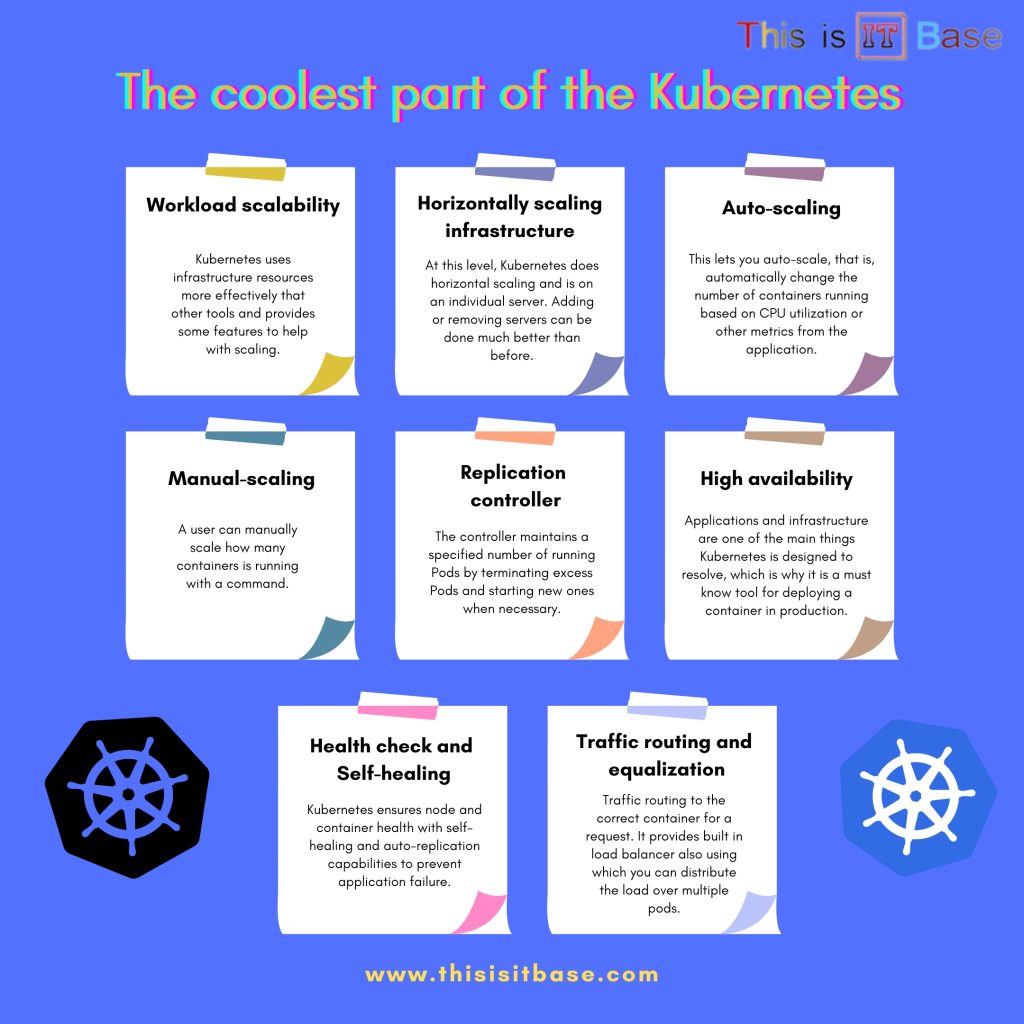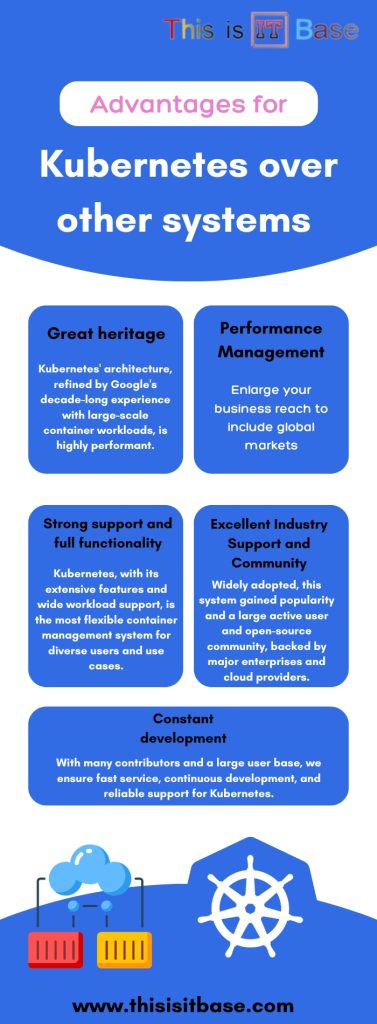Every IT guy has no doubts that Kubernetes is one of the best tools on the market to orchestrate containers. It can simplify things with Kubernetes for managing containers. This tool also streamlines the managing process at the same time.
Kubernetes works well according to most experts because of the following:
- Awesome control and hands-off updates/deployments.
- Orchestrate containers running on multi hosts.
- Supports both vertical scaling and horizontal scaling: Kubernetes vertical scalability to scale the resources and application real-time
- Autocorrection and apps testing.
This is only one bit of what makes Kubernetes fabulous. Developers like it for whatever use cases they convert on top of this, from containerization through to app dev (team chat apps, collaboration apps, communication apps, and all the way up).
For those of you who want to delve into this tool, grasp everything with the Certified Kubernetes Administrator (CKA) Certification
Table of Contents
What exactly is Kubernetes?
Kubernetes is a container management system were adopted by Google itself in its early days. Google released this as an open-source tool in 2015. After a few months, Kubernetes was contributed to CNCF.
CNCF – another Google-backed endeavour as part of the Linux Foundation for containerization and standardization advancements.
How does it work?
An easier way to put that would be that Kubernetes takes what the development and operation reality that containers deliver theoretically, makes it programmatically integratable and lays it on top of your already day to day job using Automation to abstract those containers tedious tasks away. What it really does is take care of deploying, scaling, and operating containerized applications on a cluster of servers. The server can be a virtual machine (VM) or bare metal.
On the other hand, Kubernetes have tonnes of features to automate container networking, storage, logs, event alert and so on.
Should you deploy Kubernetes?
Container technology & Kubernetes are helping organizations across sizes But, it is not because everyone follows this technology mean that you also should follow it at any cost.
No one ever adopts containerization and Kubernetes (or any other container management tool) as a end goal in self. The implementation should cater to your business, operational and strategic goals and not the other way around. Continue reading the article to know about containerization and what Kubernetes means for a business.
Benefits of containerization
Via Introduction: Since Docker is an absolute prerequisite whenever Kubernetes is mentioned, we must address Docker’s core advantages.
Easy to use
Isolation containers that provide the ability for you to run your software identically on any public cloud, private cloud, always on your laptop, or even on bare metal
Copy them as containers, faster and more reliable from development to test, integration, live etc. This, in turn, significantly simplifies and accelerates the software development and delivery process, and the effect is a shorter time-to-market. However, this is an advantage that leads to more opportunities that are a little trickier to see right away.
Lower resource costs
Much like shrink-covered bundles, containers are independent as for all that is expected to cause an application to run. Many containers share the same OS and network stack. Here is a useful resource on utilization that is a lot less verbose. Particularly when you put it side by side with the effort of creating a two-OS virtual machine per application made in node.
Apart from this container are lightweight by nature; it consumes fewer resources which leads reduction in hardware and data-centre costs.
Modularity and scalability
Container are by nature lightweight and can be built in few seconds. Users must be able to instantly scale and take into consideration to a surge in the number of visitors to a website instantly. This allows containers to readily compartmentalize an application and have each unit of business functionality isolated to a single function within a series of containers.
You might want to have that application in one container and another database running in another container. Docker provides a way to link these containers together to form your application, which makes it easy to update or scale the individual parts of it.
Kubernetes advantages over other systems
Now, let us discuss, why Kubernetes become the most popular container management solution.
Great heritage
Kubernetes, without a doubt has a performed architecture. It has a design based on what Google has learned from over a decade of experience in running container workloads at very large scales, in one of the largest container platforms in the world.
Performance Management
In the Kubernetes GUI, you can monitor the performance of your applications, manage the cluster resources, and edit the Kubernetes individual resources easily.
Strong support and full functionality
It has a rich set of features compared to the systems that perform container management.
Kubernetes also looks after including support for a broad range workloads, including stateless, stateful, and data-processing workloads. Kubernetes is the most flexible in that and it can support a large user and, use case set.
Excellent Industry Support and Community
This system has been widely applied. It expanded, and as well its dedication and noticed popularity. They additionally picked up an enormous active user and open-source community, and are now backed by some of the world’s largest enterprises, IT market giants, and big cloud providers.
Constant development
That is one of the reasons why we service so fast since it we have many contributors and new features come out daily. With this huge user base, the development is very stable as it happens continuously. There is always one who will answer the question on Kubernetes.
The coolest part of the Kubernetes

In this article, we have covered some of the key features of Kubernetes and how you can leverage these features. It is portable and 100% open-source. Kubernetes is everywhere, ready to go into any infrastructure.
Containers can be run in one or more public cloud environments, but can also be run atop a user-provided VM or on bare metal.
You can use a common orchestration tool pain all environments. Kubernetes works across different platforms to prevent infrastructure and cloud provider lock-in. It also enables the functioning of a multi-cloud strategy while adding another layer which can be used and configured very well to another level and state. That makes it an 100% open-source experience with all the flexibility in the world for users.
Workload scalability
Kubernetes uses infrastructure resources more effectively that other tools and provides some features to help with scaling.
Horizontally scaling infrastructure
At this level, Kubernetes does horizontal scaling and is on an individual server. Adding or removing servers can be done much better than before.
Auto-scaling
This lets you auto-scale, that is, automatically change the number of containers running based on CPU utilization or other metrics from the application.
Manual-scaling
A user can manually scale how many containers is running with a command.
Replication controller
The controller ensures that a user’s cluster has a specific number of Pods which are running at any given time ( n ), and there are even other combinations of the replicas that the user can use. Replication Controller ends the spare pods in case there are too many pods. When there are too few, it starts more pods
High availability
Applications and infrastructure are one of the main things Kubernetes is designed to resolve, which is why it is a must know tool for deploying a container in production.
Health check and Self-healing
Although Kubernetes ensures nodes optimum and containers health to avoid the application from fail, Kubernetes provides self-healing and auto-replicating capabilities as well.
Traffic routing and equalization
Traffic routing to the correct container for a request. It provides built in load balancer also using which you can distribute the load over multiple pods.
It is designed for deployment
The improvement of testing, building, and releasing process is regarded as the primary value of containerization by most. Kubernetes was designed especially for deploying, which is offered by numerous functionalities.
These include:
- Auto-rollouts, rollbacks
- Canary deployments
- Support in programming languages and frameworks.
Final thoughts
Now I hope you see that how much this can be beneficial if you are a Developer in short, Benefits of Kubernetes or Good Kubernetes alternative are still limitless. Take into consideration your business needs and requirements, review all the factors and then only take a decision if it is a right option. And if you do choose this technology, be assured that it will bring huge rewards.
Infographic: Advantages for Kubernetes over other systems

